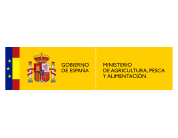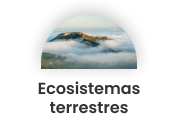The University of Santiago de Compostela is developing a conservation project for the naiad Margaritifera margaritifera.
The University of Santiago de Compostela, with the support of the Biodiversity Foundation, has developed the project ” Ex situ conservation of the endangered naiad Margaritifera margaritifera: Implementation of the cultivation action of the LIFE+ Margal Ulla project”.
Margaritifera margaritifera is a naiad, or freshwater bivalve, which due to its size, filtering function and tendency to form aggregates, has an important role in the functioning of freshwater ecosystems. It was the most common naiad in the rivers of the Atlantic arc, reaching the southern limit of its distribution in the northwest of the Iberian Peninsula. It is currently considered one of the most endangered invertebrates on the planet, with evidence of its decline in the loss of populations and, especially, in an alarming lack of recruitment throughout its distribution range.
European environmental policy makers, aware of the consequences of this situation for the health of the aquatic ecosystem, have made its conservation a priority objective, especially promoting its cultivation in captivity. The LIFE+ Margal Ulla project, which ended in 2016, has carried out actions on the habitat with the aim of improving the conservation status of the bivalve.
The ex situ conservation project in the Iberian Peninsula of the Endangered naiad Margaritifera margaritifera, initiated with the Margal Ulla project (Life 09NAT/ES/000514), has been continued.
The project has been successfully completed, meeting objectives and with the expected result of significantly increasing the stock of juveniles for the reinforcement of populations. It has made it possible to optimize the procedures, achieving a significant increase in the survival and growth of juveniles in the different cultured cohorts since 2013. In it , 2 reproductive cycles have been carried out, increasing the stock of juveniles by 38,278 individuals. In total , 55,258 individuals are kept in captivity, of which 69.27% were cultivated within the framework of the project. It has been proven that breeding in boxes (boxes) is the most suitable cultivation method during the first year, and can later be replaced by other methods (Buddensiek plate) with a lower workload. More than 10,000 individuals have been introduced into the river, in semi-free conditions, which has achieved a survival rate of 80%, which provides a good indication of the state of the juveniles previously reared in the growing season.
Finally, progress has also been made in the study of the mechanisms that glochids (parasitic larval stage) have during encysting in the gills of host fish, contributing significantly to deepening knowledge in a phase of the cycle to which little attention has been paid, and which is relevant in relation to the well-being of the host.












 back to search
back to search